
views
X
Trustworthy Source
Mayo Clinic
Educational website from one of the world's leading hospitals
Go to source
Unfortunately, there isn't a lot you can do to treat ingrown pimples.[2]
X
Research source
If you often get ingrown pimples, or if general hygiene measures are not helpful or worsen the condition, then you may want to see a dermatologist for help, but there are also some things that you can do to get rid of ingrown pimples.
Using Your Cleansing Routine
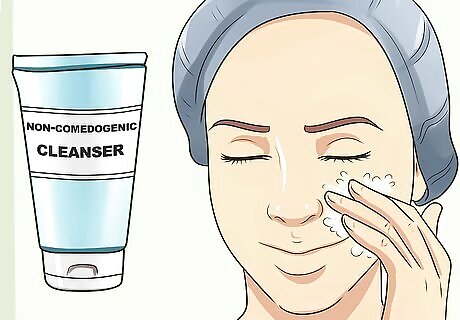
Choose a gentle cleanser. Dermatologists recommend using gentle cleansers to wash your skin. Gentle cleansers are less likely to cause irritation, which is important because irritated ingrown pimples may seem bigger and more obvious. If you think your ingrown hair is caused by bacteria, however, you will want to use an antibacterial soap. Look for a product that is labeled as “non-comedogenic.” Non-comedogenic means that the product will not clog your pores. Products containing benzyl peroxide have antibacterial properties and help heal infected follicles. Apply to infected follicle twice daily.
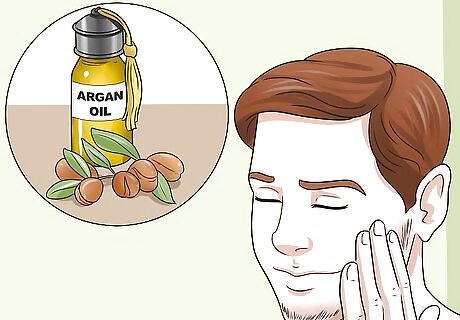
Try using a non-comedogenic oil. There are some oils that are considered non-comedogenic as well. You can use these oils to cleanse your skin. You can find many of these oils in the beauty section of well-stocked grocery stores and health food stores. Some good choices include: Argan oil Hemp seed oil Sunflower oil Shea butter Safflower oil

Wash your skin with a soft bristled toothbrush or a soft washcloth. The toothbrush bristles or washcloth fabric can help to remove dead skin and free the embedded hair. When you are washing your skin, apply a small amount of cleanser or non-comedogenic oil to the toothbrush or washcloth and use gentle circular motions to cleanse your skin. Rinse the area with lukewarm water after washing. Do not scrub your face with a harsh sponge, abrasive cloth, or other tool. Just use a soft cloth or your fingertips to wash your face.
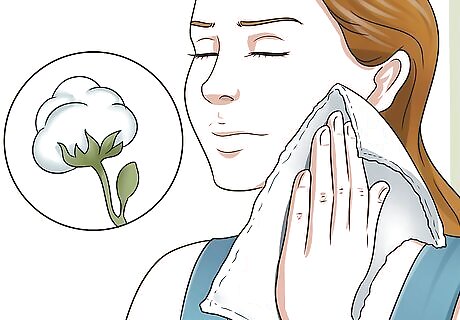
Dry off your skin with a cotton towel. Make sure that you only pat dry your skin or you may irritate the ingrown pimple. Avoid using any rubbing motions while toweling off your skin. Just use a gentle patting motion to dry your face.
Getting Medical Help
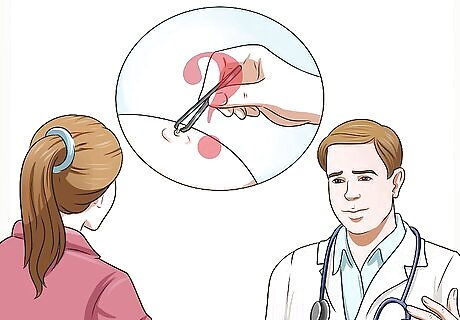
Ask your doctor about removing an ingrown hair with a sterile needle and tweezers. You can remove an ingrown hair by inserting a sterile needle into the pimple and using sterilized tweezers to catch the hair and pull it out; however, inserting a needle into your skin can lead to infection if the needle is not sterile, so it is best to check with your doctor first before trying this method. It is best to try to clear up the ingrown hair by keeping it clean before you try using a needle to remove it. If the ingrown hair is on your face, you risk scarring and disfigurement. If you aren't comfortable doing this yourself, you can ask your doctor to remove the ingrown hair for you.
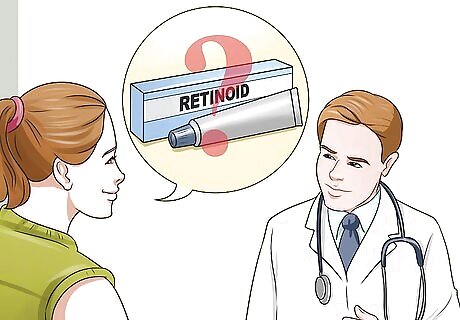
See your doctor about retinoids. Dead skin cells can build up over an ingrown pimple and cause the skin to look thicker and darker. Retinoids can get rid of dead skin cells, which may make ingrown pimples go away faster. Retinoids are available by prescription only, so ask your doctor if you are interested in trying them.
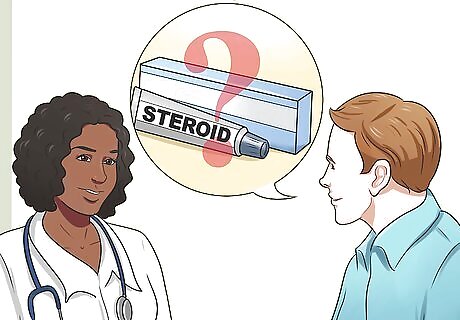
Ask your doctor about using a steroid cream to reduce inflammation. Ingrown pimples can become red and inflamed, which may make them more noticeable. Using a steroid cream will not get rid of ingrown pimples, but a steroid cream can reduce redness and swelling. As a result, your ingrown pimples may blend in with the rest of your skin a little better.

Talk to your doctor about an antibiotic ointment. Because ingrown pimples are prone to infection, antibiotic ointments may help to control infections. If you develop a severe infection from an ingrown pimple, then your doctor may prescribe an oral antibiotic. Make sure that you follow your doctor’s instructions for using antibiotic creams and pills.
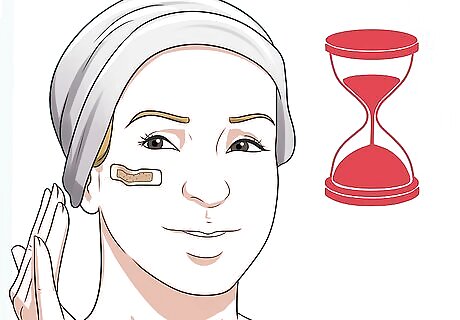
Try to be patient. Most ingrown hairs will go away on their own and your doctor may advise you to just leave it alone. If the ingrown pimple bothers you, then you can cover it with a loose band-aid until it heals. While you are waiting for the ingrown pimple to get better, do not tweeze, wax, or shave the area, as this can cause further irritation.
Preventing Ingrown Pimples
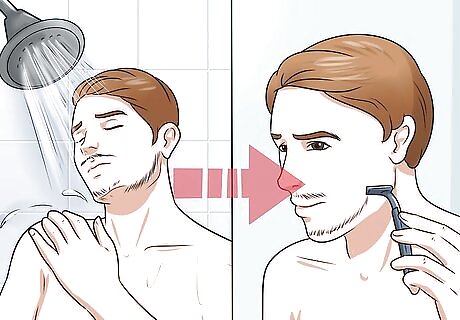
Shave after you shower. Your hair will be softer near the end of your shower, so it is better to hold off on shaving until then. To moisten the hair on your face, try washing your face with warm water first or give yourself a hot towel treatment. To give yourself a hot towel treatment, take a towel or washcloth and hold it under warm to hot running water until it is saturated. Then, wring out the excess water and place the towel over your face. Leave the towel on your face for about five minutes.
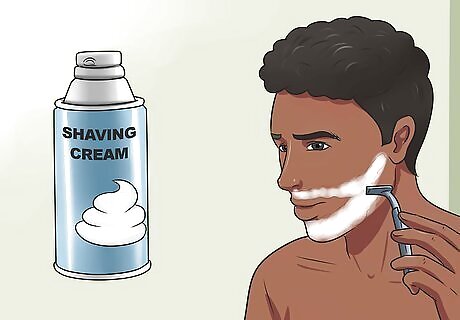
Use shaving cream. Shaving cream can also help to soften up your hair and reduce the chance that an ingrown hair will form. Try leaving a layer of shaving cream on your hair for a few minutes before you start to shave.
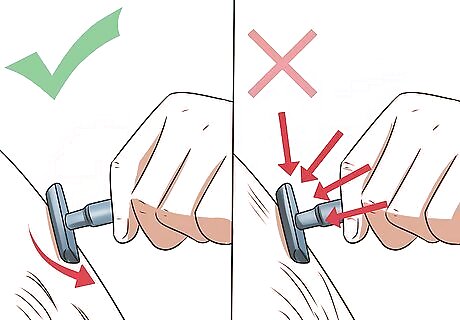
Apply light pressure. Giving yourself a close shave puts you at risk of developing ingrown hairs, so it is best to avoid using heavy pressure when you shave. Try to apply light pressure and avoid pulling your skin taut when you shave.
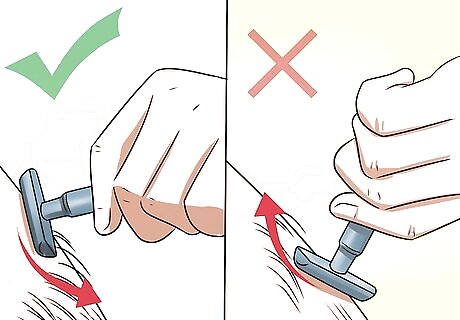
Shave in the direction of hair growth. You may have grown up shaving "against the grain," but this can cause ingrown hairs that result in pimples. Shave in the same direction as your hair grows (usually, downward) to help prevent ingrown pimples. Always use a sharp razor, and use as few strokes as possible.
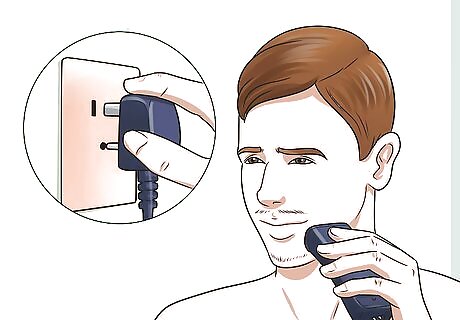
Get an electric razor. Electric razors may also help to reduce your chances of developing ingrown pimples. Just make sure that you do not use the close shave setting on your razor and avoid pressing the razor into your skin. You should also use your electric razor on wet skin only to reduce the chance of developing ingrown pimples.
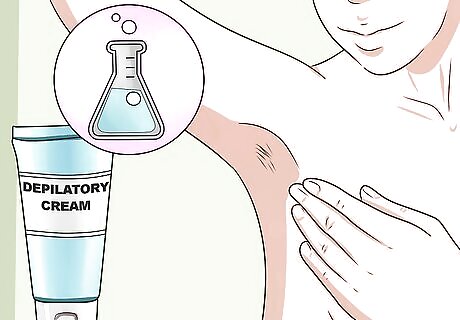
Use a chemical hair remover. Chemical depilatory creams can also reduce the risk of ingrown pimples. Just keep in mind that these products can cause irritation as well, so it is best to test it on a small area of your skin before using it on a larger area. Make sure you choose a product that is appropriate for the area of your body that you want to use it on. For example, use only facial depilatories on your face.



















Comments
0 comment